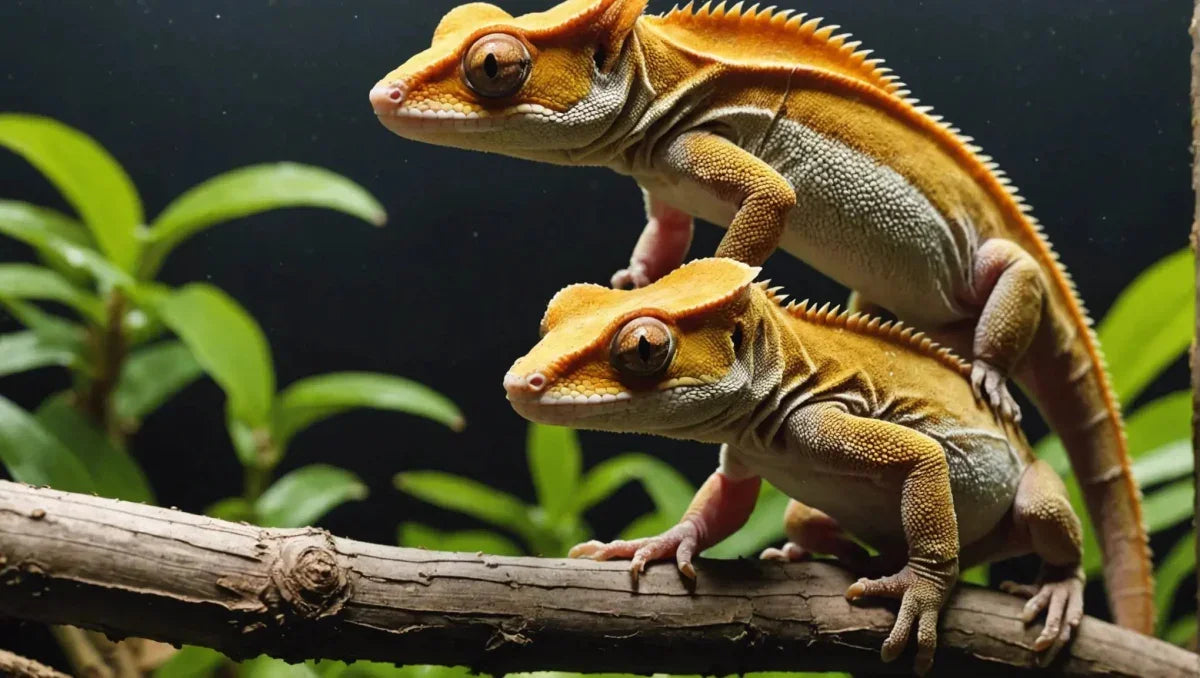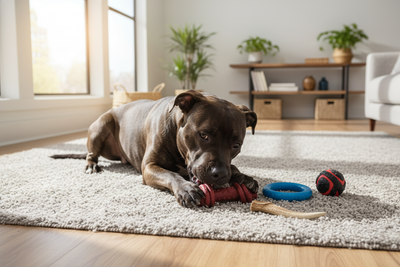Crafting a Thriving Habitat for Your Reptilian Companion

Crafting a thriving environment for your pet companion involves meticulous attention to detail, from enclosure setup to maintaining optimal temperature and humidity levels. This guide delves into the essential components required to replicate the natural habitat of a unique reptilian friend. By grasping the specific needs of these creatures and implementing them effectively, you can establish a secure and cozy space where your companion can truly thrive. Join us on this journey as we explore the world of these fascinating creatures and uncover the secrets to creating a habitat that caters to their individual requirements, ensuring a happy and enriching home environment for your scaly friend.
Setting Up the Ideal Habitat
When creating the perfect habitat for your pet, there are several key factors to consider to ensure their well-being and happiness. This section will discuss choosing the right enclosure size and type, essential habitat components such as substrates, heating, and lighting, as well as adding decorative elements for enrichment.
Choosing the Right Enclosure Size and Type:
Selecting the appropriate enclosure size is crucial to provide your pet with enough space to move around, exercise, and exhibit natural behaviors. The size requirements vary depending on the species, so it's essential to research and understand your pet's specific needs. Additionally, the enclosure type, whether it's a glass terrarium, a plastic tub, or a custom-built wooden vivarium, should cater to your pet's requirements for ventilation, security, and insulation.
Essential Habitat Components:
-
Substrates: The substrate in your pet's habitat serves multiple purposes, including providing a comfortable surface to walk on, aiding in maintaining humidity levels, and facilitating natural behaviors like burrowing or digging. The choice of substrate varies based on the species' natural habitat and specific needs.
-
Heating: Maintaining the correct temperature gradient within the habitat is essential for your pet's thermoregulation. Utilizing heat sources like heat mats, ceramic heat emitters, or basking bulbs can help create warm spots for basking and cooler areas for regulating body temperature.
-
Lighting: Proper lighting is crucial for your pet's overall health, as it influences their behavior, metabolism, and vitamin D synthesis. Depending on the species, you may need to provide UVB lighting to support calcium absorption and prevent metabolic bone diseases.
Adding Decorative Elements for Enrichment:
Enriching your pet's habitat with decorative elements such as branches, rocks, hides, plants, and climbing structures can promote natural behaviors, mental stimulation, and physical exercise. These additions not only enhance the aesthetic appeal of the enclosure but also create a more engaging and stimulating environment for your pet.
Temperature and Humidity Regulation:
Maintaining the correct temperature and humidity levels within the habitat is crucial for your pet's health. Different species have specific temperature and humidity requirements, so it's essential to research and provide the ideal conditions. Using thermostats, hygrometers, and misting systems can help regulate these environmental factors effectively.
Feeding and Watering Stations:
Designating specific areas for feeding and watering within the habitat can help establish a routine for your pet and prevent food contamination. Ensure that food and water dishes are easily accessible and cleaned regularly to maintain hygiene and prevent bacterial growth.
Behavioral Enrichment Activities:
Incorporating interactive toys, puzzles, and foraging opportunities can stimulate your pet's mind and prevent boredom. Engaging your pet in activities that mimic their natural behaviors, such as hunting for food or climbing, can enhance their overall well-being and mental health.
By carefully considering and implementing these aspects when setting up your pet's habitat, you can create an ideal living space that meets their physical, behavioral, and psychological needs.
Maintaining Optimal Habitat Conditions
When it comes to keeping your pets healthy and happy, maintaining optimal habitat conditions is crucial. This involves managing temperature and humidity levels, following feeding and hydration guidelines, and ensuring proper cleaning and waste disposal practices.
Managing Temperature and Humidity
Different species of animals have specific temperature and humidity requirements. It is essential to research and understand these needs to provide a comfortable environment for your pets. Using thermostats, heat lamps, and humidifiers can help regulate these conditions effectively. For reptiles, such as snakes or lizards, providing a temperature gradient within their enclosure is vital to allow them to thermoregulate effectively. This can be achieved by placing heat sources at one end of the habitat, creating a warm basking spot, and a cooler area at the other end.
Feeding and Hydration Guidelines
Providing the right type and amount of food is essential for your pets' health. Consult with a veterinarian or do thorough research to determine the appropriate diet for your pets. Different animals have varying dietary needs, and it's crucial to meet these requirements to prevent nutritional deficiencies or obesity. Additionally, consider enrichment activities during feeding time to stimulate your pets mentally and physically. For example, hiding food in puzzle toys for dogs or offering foraging opportunities for birds can enhance their overall well-being.
Cleaning and Waste Disposal
Regular cleaning of the habitat is necessary to prevent the buildup of bacteria and parasites. Remove uneaten food, feces, and soiled bedding promptly. Use pet-safe disinfectants to clean the habitat regularly. Consider deep cleaning the habitat periodically by replacing substrate, washing decor items, and sanitizing surfaces to maintain a healthy environment for your pets. Proper waste disposal is crucial for maintaining a hygienic environment for your pets. Consider composting organic waste or following local regulations for pet waste disposal.
Environmental Enrichment
In addition to meeting the basic needs of your pets, providing environmental enrichment is essential for their mental and physical well-being. Enrichment activities can include providing toys, puzzles, hiding spots, climbing structures, and sensory stimulation. For example, for small mammals like hamsters or gerbils, offering tunnels and wheels can help prevent boredom and encourage exercise. For birds, providing perches of varying diameters and textures can promote foot health and prevent muscle atrophy. Regularly rotating and introducing new enrichment items can keep your pets engaged and prevent behavioral issues.
Monitoring and Veterinary Care
Regularly monitor your pets' behavior, appetite, and overall condition to detect any signs of illness or distress early. Establish a relationship with a veterinarian who has experience with the specific species you own. Schedule routine check-ups and follow their recommendations for vaccinations, parasite prevention, and any necessary medical treatments. Prompt veterinary care can significantly impact your pets' health outcomes and quality of life.
By following these comprehensive guidelines and maintaining optimal habitat conditions, you can ensure the well-being and longevity of your beloved pets.
Enhancing the Habitat Environment
When it comes to creating a thriving habitat for your pet, enhancing the environment is key. This can be achieved through various methods, with one popular approach being the implementation of a bioactive substrate. Bioactive substrates are living substrates that contain beneficial microorganisms, such as springtails and isopods, which help break down waste and maintain a healthy environment.
- Bioactive Substrates:
- Living substrates containing beneficial microorganisms
-
Help break down waste and maintain a healthy environment.
-
Cleanup Crew:.
- Consisting of springtails and isopods
- Aid in waste management
To set up a bioactive habitat, you will need a few essential supplies. This includes a suitable substrate, such as coconut coir or organic potting soil, as well as a variety of plants for enrichment. Additionally, habitat kits specifically designed for bioactive setups are available and can provide everything you need to create a thriving ecosystem for your pet.
Implementing a Bioactive Substrate
A bioactive substrate is more than just a base for your pet's habitat; it's a living ecosystem in itself. When creating a bioactive substrate, consider using a mix of organic materials like coconut coir, sphagnum moss, and leaf litter. These materials not only provide a naturalistic environment but also serve as food and shelter for the microorganisms that help maintain the substrate's balance.
Introduction to Cleanup Crew (Springtails and Isopods)
Springtails and isopods are not just beneficial for waste management; they also play a crucial role in creating a self-sustaining ecosystem within the habitat. Springtails, with their ability to consume mold and decaying matter, help prevent the growth of harmful bacteria and fungi. Isopods, on the other hand, aid in breaking down larger pieces of organic waste, contributing to nutrient recycling and soil aeration.
Recommended Supplies and Habitat Kits
When setting up a bioactive habitat, it's essential to choose the right supplies to ensure the well-being of your pet. Opt for natural substrates free from chemicals or pesticides, as these can harm the microorganisms essential for the substrate's balance. Additionally, consider adding a variety of live plants to the habitat, not only for aesthetic purposes but also to create hiding spots and enrichment opportunities for your pet.
For those new to bioactive setups, habitat kits tailored for bioactive environments can be a convenient option. These kits often include all the necessary components, such as substrate, plants, and cleanup crew, making it easier to establish a functional ecosystem for your pet.
By incorporating a bioactive substrate, introducing a cleanup crew, and selecting the right supplies and habitat kits, you can create a dynamic and sustainable habitat environment for your pet. This not only benefits your pet's well-being but also adds an extra layer of interest and engagement to their living space.
Enhancing Your Pet's Habitat
Creating an enriching habitat for your pet is crucial for their physical and mental well-being. Habitat enrichment goes beyond just providing the basic necessities; it involves creating a dynamic environment that stimulates natural behaviors and promotes overall health. Here are some additional tips to further enhance your pet's habitat:.
-
Variety in Substrate: Consider using a combination of substrates like soil, sand, and leaf litter to mimic the natural habitat of your pet. This variety not only adds visual interest but also allows for natural behaviors like burrowing and digging.
-
Environmental Enrichment Toys: Introducing toys and objects that encourage foraging, exploration, and play can prevent boredom and increase mental stimulation. For example, puzzle feeders or hiding treats around the habitat can engage your pet's natural instincts.
-
Temperature and Lighting Control: Ensure that your pet's habitat has appropriate temperature gradients and lighting conditions. Providing basking spots, UVB lighting for reptiles, or heat lamps can help regulate body temperature and support essential physiological functions.
-
Hiding Spots and Retreats: Incorporating hiding spots like caves, tunnels, or plants can offer your pet a sense of security and privacy. These retreats are essential for reducing stress and providing a safe space for your pet to rest.
-
Rotation of Enrichment: To prevent habituation, regularly rotate and introduce new enrichment items in the habitat. This keeps your pet engaged and curious, preventing monotony and encouraging natural behaviors.
-
Utilizing Climbing Opportunities: Depending on your pet's species, providing climbing structures such as branches, rocks, or platforms can encourage natural behaviors like climbing and perching. This not only adds vertical space to the habitat but also promotes physical exercise and mental stimulation.
-
Incorporating Live Plants for a Natural Feel: Live plants not only enhance the aesthetic appeal of the habitat but also contribute to a more natural and dynamic environment. Plants can provide hiding spots, improve air quality, and create a sense of security for your pet.
-
Creating a Feeding Ledge for Easy Access: Designing a feeding ledge or platform within the habitat can make mealtime more engaging for your pet. This setup not only encourages natural feeding behaviors but also allows for easy access to food, promoting healthy eating habits.
By incorporating these additional habitat enrichment strategies along with the previous tips, you can create a diverse and stimulating environment that caters to your pet's physical health, mental well-being, and overall happiness.
Maintaining the Well-Being of Your Crested Gecko
Crested geckos are fascinating pets known for their unique appearance and low maintenance care requirements. Ensuring the well-being of your crested gecko is essential for their health and happiness. This section will discuss key aspects to consider in maintaining the well-being of your crested gecko.
Monitoring Behavior and Health
- One of the primary ways to ensure the well-being of your crested gecko is by monitoring its behavior and health regularly.
- Observing your gecko's eating habits, activity levels, and overall appearance can help you identify any potential issues early on.
- Any sudden changes in behavior or appetite should be noted and addressed promptly by consulting a reptile veterinarian.
- Regular health check-ups are also recommended to detect any underlying health issues.
Providing Adequate Space and Comfort
- Crested geckos require a suitable enclosure that provides enough space for movement and exploration.
- A well-ventilated terrarium with branches, plants, and hiding spots mimicking their natural habitat is ideal.
- It's important to create a multi-level environment with different textures and heights to encourage natural behaviors like climbing and jumping.
- Additionally, ensuring proper UVB lighting and a basking spot will help maintain their overall well-being.
Promoting Mental Stimulation and Activity
- In addition to a comfortable environment, mental stimulation and physical activity are essential for crested geckos.
- Introducing a variety of safe and enriching activities such as providing different types of branches for climbing, rotating hiding spots, and offering live food for hunting can keep your gecko mentally engaged and physically active.
- Creating a feeding schedule that includes a mix of live insects and commercial diets will ensure a balanced nutrition intake.
Maintaining Hygiene and Cleanliness
- Another crucial aspect of ensuring your crested gecko's well-being is maintaining a clean environment.
- Regularly clean and disinfect the terrarium to prevent the buildup of bacteria and parasites.
- Ensure that the substrate is spot-cleaned daily and completely replaced every few months to prevent mold and bacterial growth.
- Providing fresh water daily and monitoring your gecko's hydration levels is also vital for their health.
By focusing on monitoring behavior and health, providing adequate space and comfort, promoting mental stimulation and activity, and maintaining hygiene and cleanliness, you can ensure the overall well-being and happiness of your crested gecko.
Conclusion
Creating the perfect habitat for your crested gecko is essential for their health and well-being. By providing a suitable environment with the right accessories and supplies, you can ensure that your pet thrives in captivity. The Zilla Micro Reptile and Amphibian Habitats Arboreal webpage on Talis US offers a diverse range of products tailored to reptile and amphibian enthusiasts. From terrariums to food options, this webpage covers all the essentials needed to set up an ideal habitat for your crested gecko. To explore these high-quality products and elevate your gecko's living space, visit. relevant_url .





